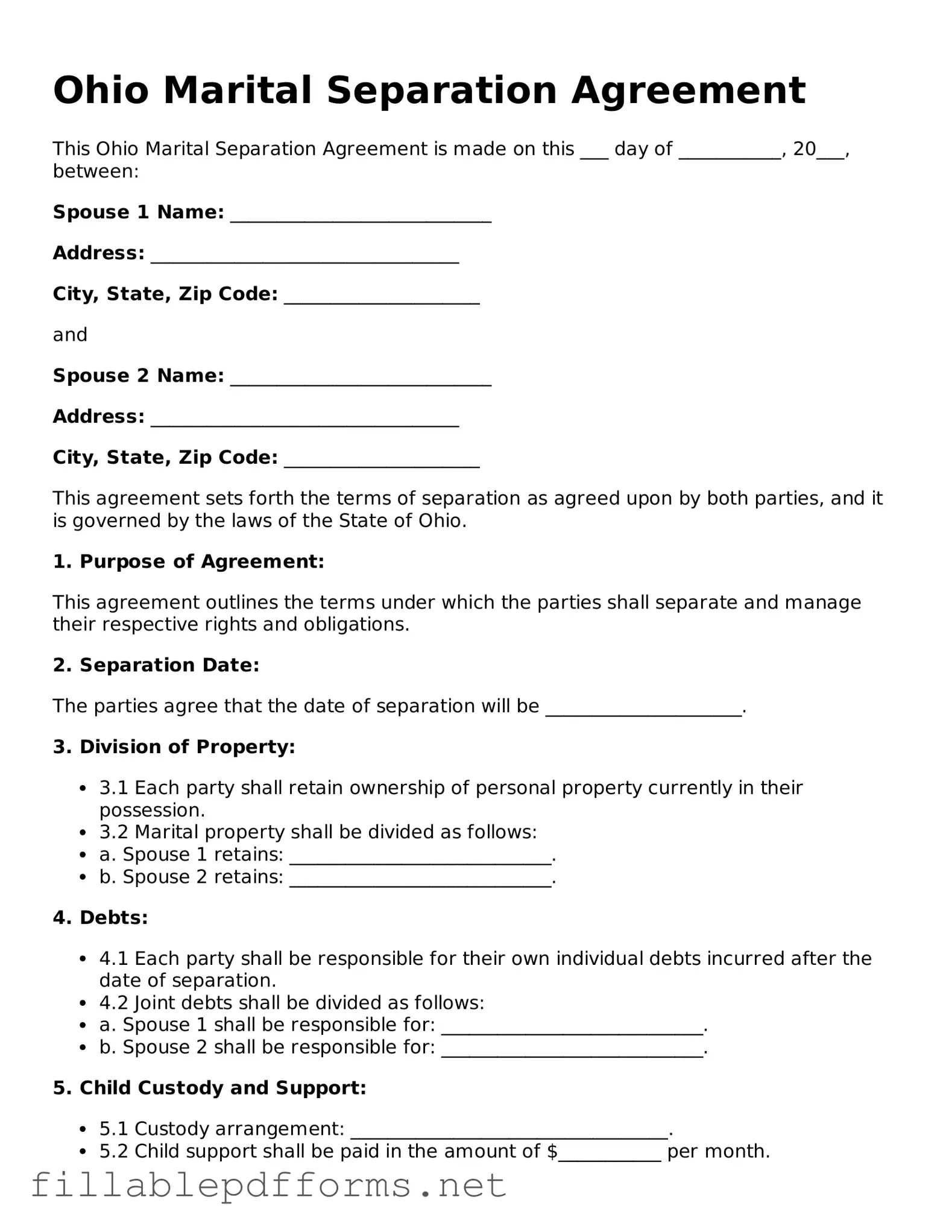Attorney-Verified Marital Separation Agreement Form for Ohio State
The Ohio Marital Separation Agreement is a legal document that outlines the terms and conditions agreed upon by spouses who wish to live apart while remaining legally married. This agreement can cover various aspects, including property division, child custody, and support obligations. Understanding this form is crucial for ensuring that both parties' rights and responsibilities are clearly defined during the separation process.
Launch Editor Here
